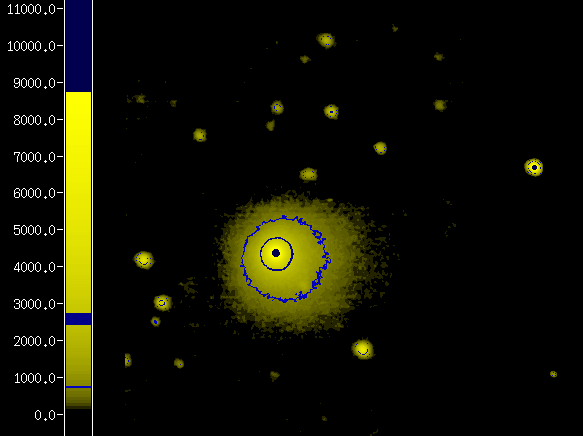
Comet 1999 T1 (McNaught-Hartley) on February 11, 2001, observed with dr. Judith Irwin at the Queen's Observatory. (preliminary image processing).

Comet 1999 T1 (McNaught-Hartley) on February 11, 2001, observed with dr. Judith Irwin at the Queen's Observatory.
(preliminary image processing).
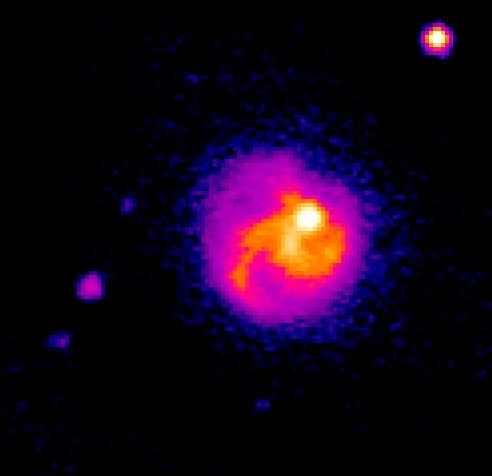 Supernova in IC 391, January 11 2001, observed with Rupinder.
Supernova in IC 391, January 11 2001, observed with Rupinder.
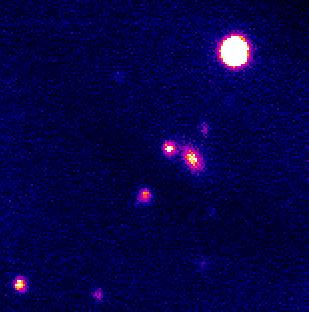 Supernova in the galaxy PGC 19975, January 11 2001, observed with Rupinder. The galaxy is the elliptical smudge to the right of the centre. The supernova, almost as bright as the enire galaxy, is the bright star just left (slightly up) from PGC 19975.
Supernova in the galaxy PGC 19975, January 11 2001, observed with Rupinder. The galaxy is the elliptical smudge to the right of the centre. The supernova, almost as bright as the enire galaxy, is the bright star just left (slightly up) from PGC 19975.
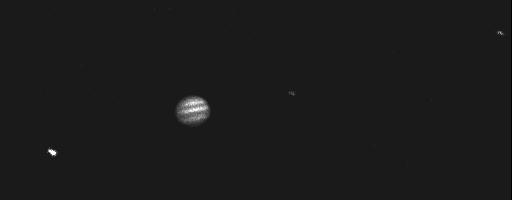 Jupiter on, January 11 2001, observed with Rupinder.
Jupiter on, January 11 2001, observed with Rupinder.
This image passed through a series of digital filters to enhance contrast and enhance
the brightness of the moons relative to the surface of the planet.
The moons are, from left to right: Ganymede, Io and Callisto.
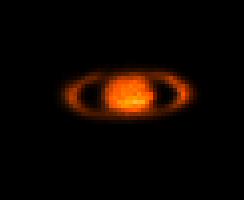 Saturn, observed with Rupinder.
Saturn, observed with Rupinder.
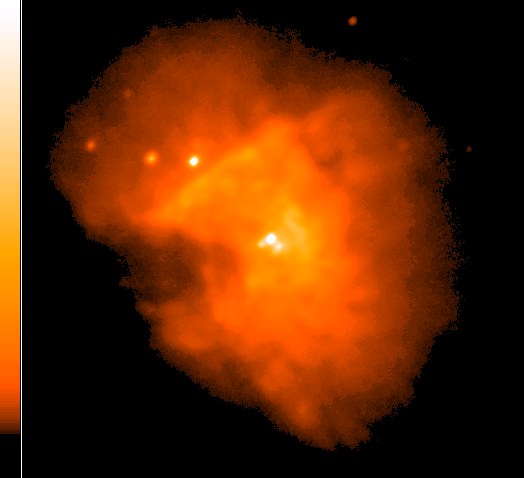
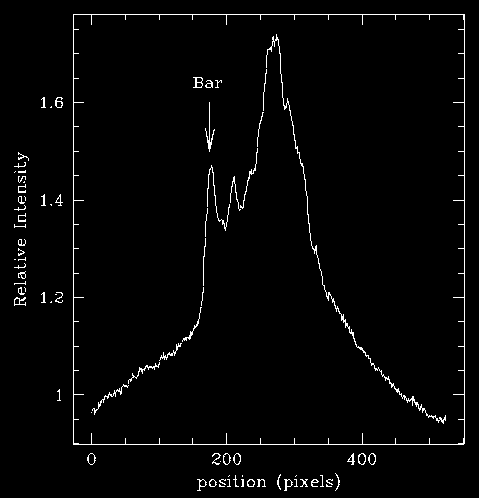 Image of the Orion Nebula (M42) in H-alpha, and right a profile of intensity versus position
from the upper left to the lower right. The position of the staight structure, the Orion Bar, is
indicated with an arrow.
Image of the Orion Nebula (M42) in H-alpha, and right a profile of intensity versus position
from the upper left to the lower right. The position of the staight structure, the Orion Bar, is
indicated with an arrow.


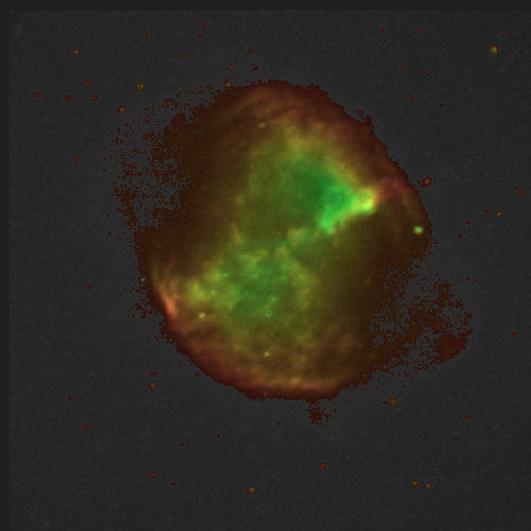
Planetary nebula M27 observed with dr. Judith Irwin at the Queen's Observatory. Left: H-alpha, Centre: OIII, Right: combined H-alpha/OIII image. Click on image for a larger version.
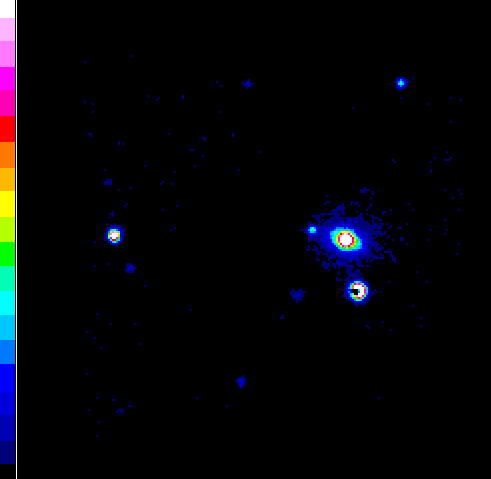
Supernova SN 2000 dr in the S0 galaxy IC 1610 on October 20, 2000, observed with dr. Judith Irwin at the Queen's Observatory. The supernova appears just left of the nucleaus of IC 1610.
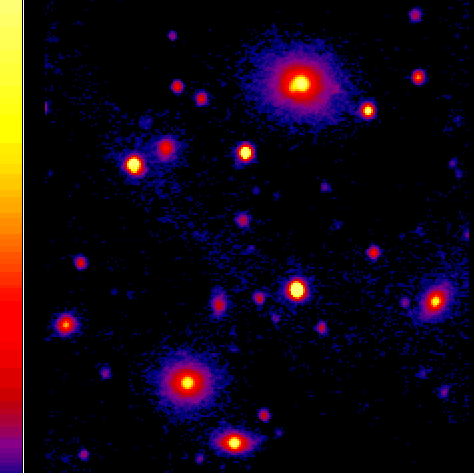
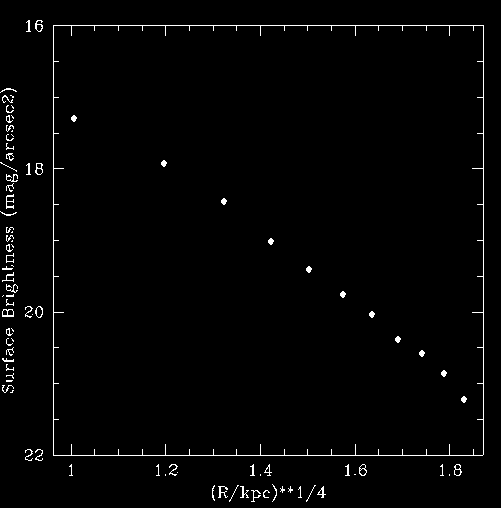
Left: Centre of the Perseus cluster at a distance of 230 million lightyears.
Right: Surface brightness profile of NGC 1275 (the largest galaxy in the image), scaled at one
radius to the V band surface brightness
in Prestwich et al.(1997), ApJ 477,144 (the image was taken with the clear filter, though!).
Note the r**1/4 law, and that the surface brightness limit for this image is about 21.5 mag/arcsec**2. This
can be improved becasue we had serious flatfielding problems for this image.
Observed with dr. Judith Irwin at the
Queen's Observatory.
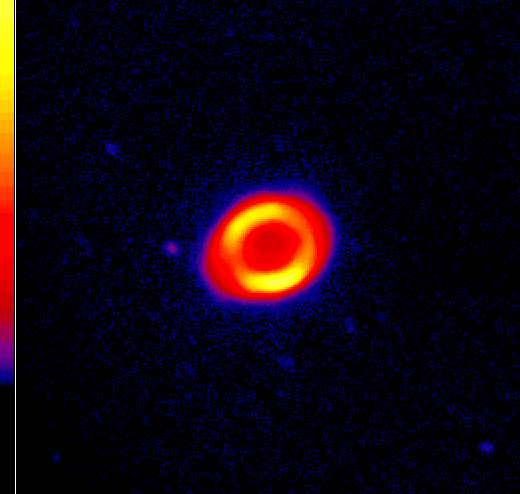
Planetary nebula M57 in OIII observed with dr. Judith Irwin at the
Queen's Observatory.
| Field | RA(1950) h m s | DEC(1950) d m s | Comments |
|---|---|---|---|
| 0248-196 | 02:47:46.6 | -19:46:11 | |
| 9090-7 | 09:09:32.6 | -07:38:26 | |
| CT1 | 10:04:27.0 | -02:19:00 | |
| 1101-264 | 11:02:23.5 | -26:43:57 | |
| CT5 | 12:26:08.7 | -06:38:29 | |
| CT2 | 12:54:58.7 | -02:07:04 | |
| SER1 | 15:13:13.9 | -00:31:48 | |
| 2345+007 | 23:45:45.9 | +00:40:40 | |
| SPKS 04 | 15:39:43.0 | -33:56:54 | No stars in 5' x 5' |
| SPKS 06 | 16:25:40.0 | -25:09:48 | Few stars in 5' x 5' |
| SPKS 08 | 17:31:06.0 | -25:44:24 | |
| SPKS 09 | 18:02:01.0 | -04:32:36 | |
| SPKS 11 | 13:04:33.0 | +29:50:49 | |
| SPKS 12 | 16:49:42.0 | -15:21:00 | No stars |
| SPKS 13 | 19:19:09.0 | +12:22:05 | |
| SPKS 14 | 21:26:54.4 | -08:51:41 |